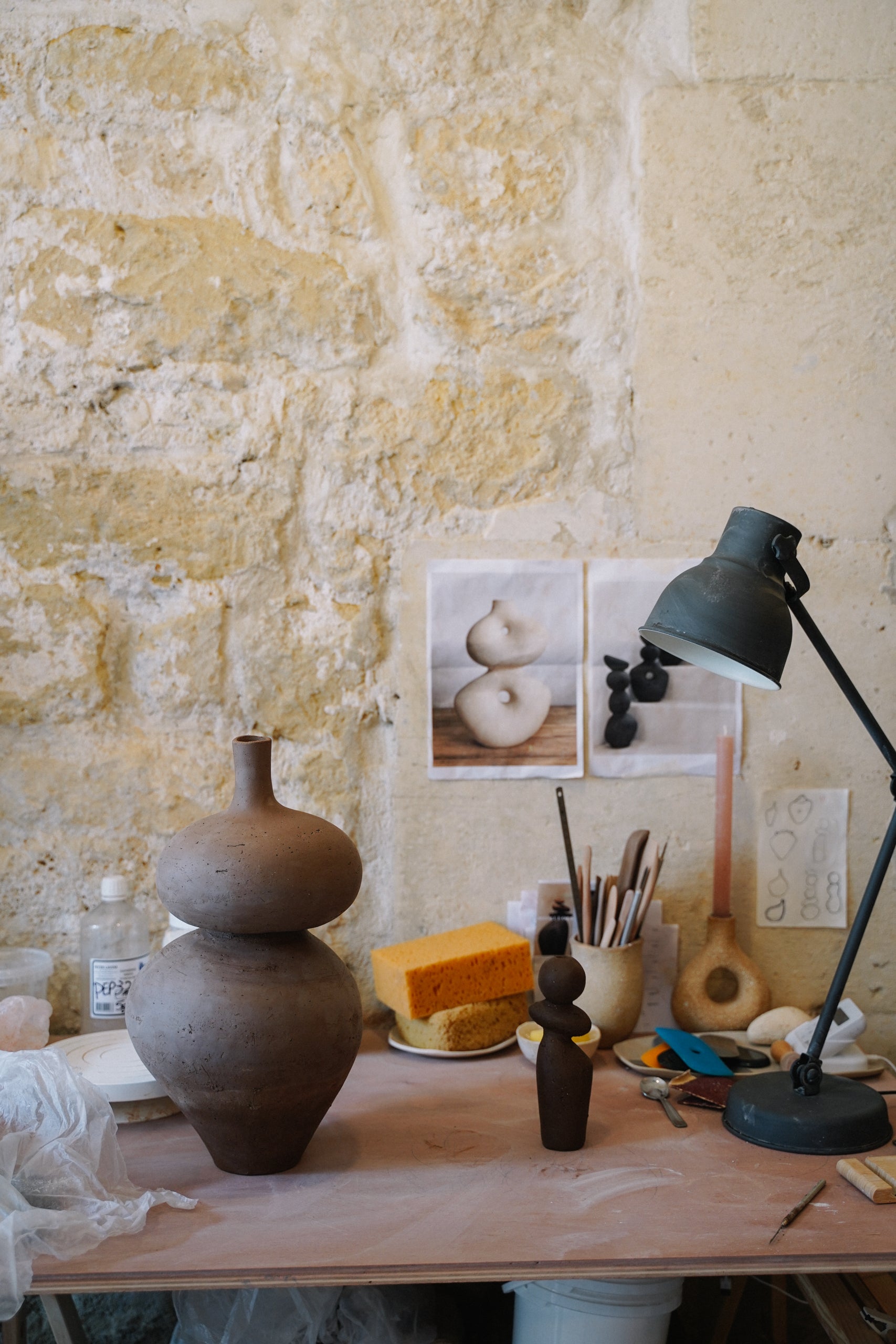Meeting + interview with Lucia Mondadori
Brutal. went to meet the ceramist Lucia Mondadori in her Parisian studio. Let's discover his universe through an interview.
What is your background and your training to get to ceramics?
I studied visual arts in Brazil. For more than 10 years I worked as a graphic designer in stationery publishing and visual merchandising. In 2013 I stopped everything to create a small cold-pressed juice company, which is still in business today. Then I moved to Paris with my partner in 2016, I sold the shares of my company, I had two children and a return to the applied arts with my conversion into a ceramist.


Are you self-taught or did you learn from someone else?
I am rather self-taught. I learned the basics from several ceramists during internships in filming, modeling, and in a shared workshop. Then, very quickly, I set up a workshop in my cellar. It was a watershed moment - with my own oven things got serious. That said, I highly recommend the trainings - you advance much faster. This year I was finally able to train myself in the Creation of enamels with Christophe Bonnard at the School of Arts and Ceramic Techniques.
Do you remember your first play?
Yes ! I even have several! As a child, I made a pink pot, which is still with my mother. As a teenager, I made a sculpture of a pregnant woman and it was my very first sale. More recently, I still have at home my first turned bowl, the first empty pocket modeled on a plate and the first vase made with a coil. These are the witnesses of the click!
How would you define your job?
It's hard to define yourself, to put yourself in a box, at the same time I looked for a kind of definition when I made my website, and what I found most beautiful was the world of sculptural, abstract, raw ceramics.



What is your creative and manufacturing process?
I do moodboards, sketches. I seek inspiration in art, in nature, in other materials, in the curves of the human body. Often I let myself be carried by the earth. Each piece modeled by hand teaches us something new, the gestures become a dance. I beat the earth to shape it, but I also caress it. I sand the pieces to find the texture of the chamotte. Finally, I make my enamels - the raw materials and their chemistry fascinate me.



What is your favorite technique? Your favorite moment in the process?
Colombin modeling - a very old and essential technique for the shapes I develop - often asymmetrical. It is a meditative moment where I am totally anchored in the present.




What is your favorite material? What do you like about him?
I work the sandstone at high temperature, often very chamotté, which gives a lot of character to the pieces. I like the very mineral composition of this earth and its great solidity. In English we call this material “stoneware”, literally stone!



What inspires you outside of ceramics?
The rocks by the sea, those big totems formed over millennia - maybe it's because I grew up on an island in southern Brazil and spent days climbing them. I like to find a bit of their texture on the raw stoneware pieces.
Can you tell us about one or more books on ceramics or something else?
I have a whole library of books on ceramics, they have all given me a lot. I can cite Urban Potters - Makers in the City by Katie Treggidden, because it's inspiring to know the journey of ceramists around the world. History of Ceramics - The great civilizations of Virginie Armelin - because I am passionate about history. Practice of sandstone enamels - Minerals and Vegetable Ashes, by Daniel de Montmollin, to better understand the raw materials and learn how to do the molar calculation of enamels. On many other topics, I listen to audiobooks throughout my modeling days. My last favourites: La Carte Postale, by Anne Berest.











